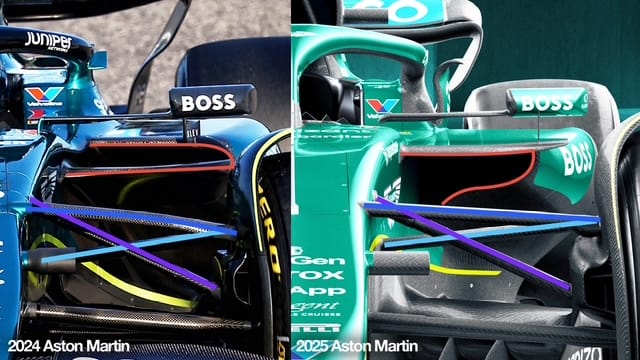
As Adrian Newey approaches his official start with Aston Martin in just a week, the existing technical team faces increased scrutiny to demonstrate their expertise in F1 car design and performance.
This marks the fourth and final year under the current ground effect regulations, emphasizing the importance of leveraging insights gained over the past three seasons. Reliance on a figure like Newey should not be essential for any team aiming to their full potential.
Looking ahead to 2026, the introduction of new regulations presents a fresh slate of concepts, methods, and approaches. It would be more beneficial for Newey to dive into these new challenges, using the 2025 project as a diagnostic tool to identify Aston Martin’s strengths and weaknesses.
With the AMR25 now unveiled, it’s time to take a detailed look and draw comparisons.
As usual, let’s navigate through the intricacies of aerodynamics like a bumblebee, aiming for optimal airflow from the front to the rear without encountering too many obstacles—after all, that’s the essence of aerodynamics.
Front Wing
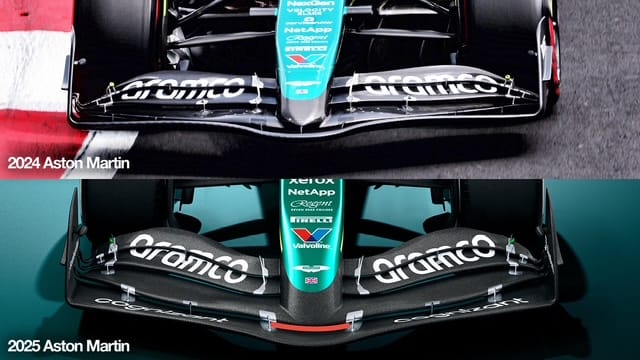
Aston Martin has announced significant alterations to the front wing, aimed at enhancing low-speed corner grip.
The comparison images are taken from slightly different perspectives, possibly highlighting the differences more than intended. Yes, modifications to the element cord lengths will impact aerodynamics, but evaluating the effects of low-speed and high-speed airflow remains a complex task, particularly with the challenges posed by rotational flexing—though recent regulatory changes following the Spanish GP may address this.
The nose of the car appears bulkier, but Aston Martin has also maintained the leading element in the nose slot area (highlighted in red). This approach is commendable, as it enhances the consistency of airflow beneath the nose and contributes to improved performance in the underfloor section.
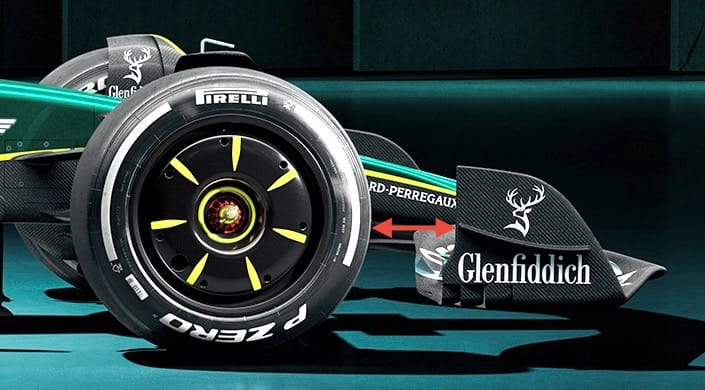
The space between the front wheel and the trailing edge of the front wing’s endplate (highlighted in red) seems larger than usual. This might just be an optical illusion, but if confirmed, it could enhance outwash and improve the front wing’s efficacy during tighter steering angles in slow corners.
Front Suspension
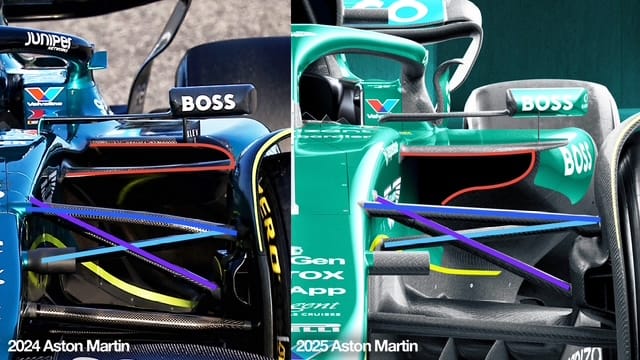
The front suspension design closely resembles last year’s setup, showing no significant variations in anti-dive characteristics. Unlike Ferrari’s design overhaul, Aston has maintained its pushrod-driven suspension layout (highlighted in magenta).
However, alterations have been made to the radiator intake (highlighted in red), which I will elaborate on below.
Radiator Intake
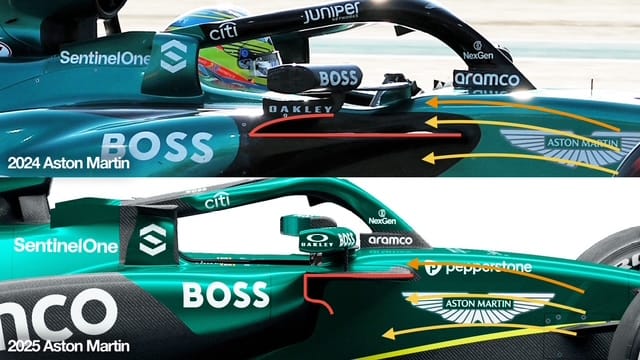
Compared to the 2024 model, the radiator intake has been upgraded with a ‘Peaky Blinders’ style over the inlet. While many teams adopted similar designs last year, Aston Martin opted for the older ‘duck bill’ configuration.
This new inlet design (highlighted in red) provides advantages when running high front wing angles, as the peak aligns with the airflow separation point, while below the peak exists the wake generated from the front wing (indicated by yellow arrows), and above it, the airflow flowing over the wing (illustrated by the orange arrow).
Notably, the radiator opening appears slightly larger than before, a trend observed in many 2025 cars, suggesting teams are bracing for an intense season with more on-track competition.
Sidepod
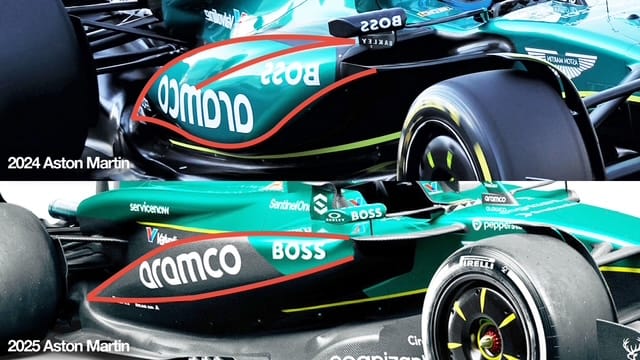
The profile of the sidepods is less intricate compared to last year’s model, with the primary features highlighted in red. The top surface gulley of the sidepod has been both retained and accentuated.
The low-pressure area behind the car’s central section directs airflow downward through this gully (light blue highlight). It’s crucial to ensure that the expansion rate of the gully remains uniform; otherwise, airflow separation may occur in the narrower sections (yellow ellipse), which could diminish its effectiveness.
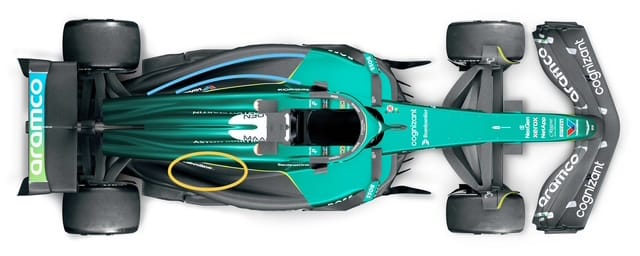
Air flowing over the top of the sidepod (light blue arrows) is drawn down to the middle of the car, in compliance with regulations intended to minimize the formation of vortices from bodywork elements.
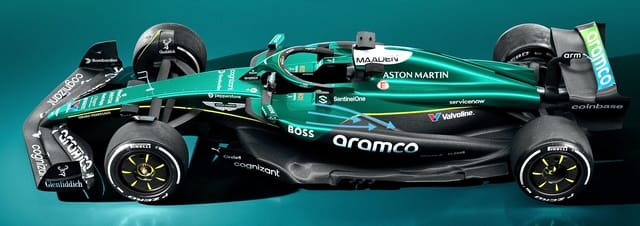
Rear Suspension
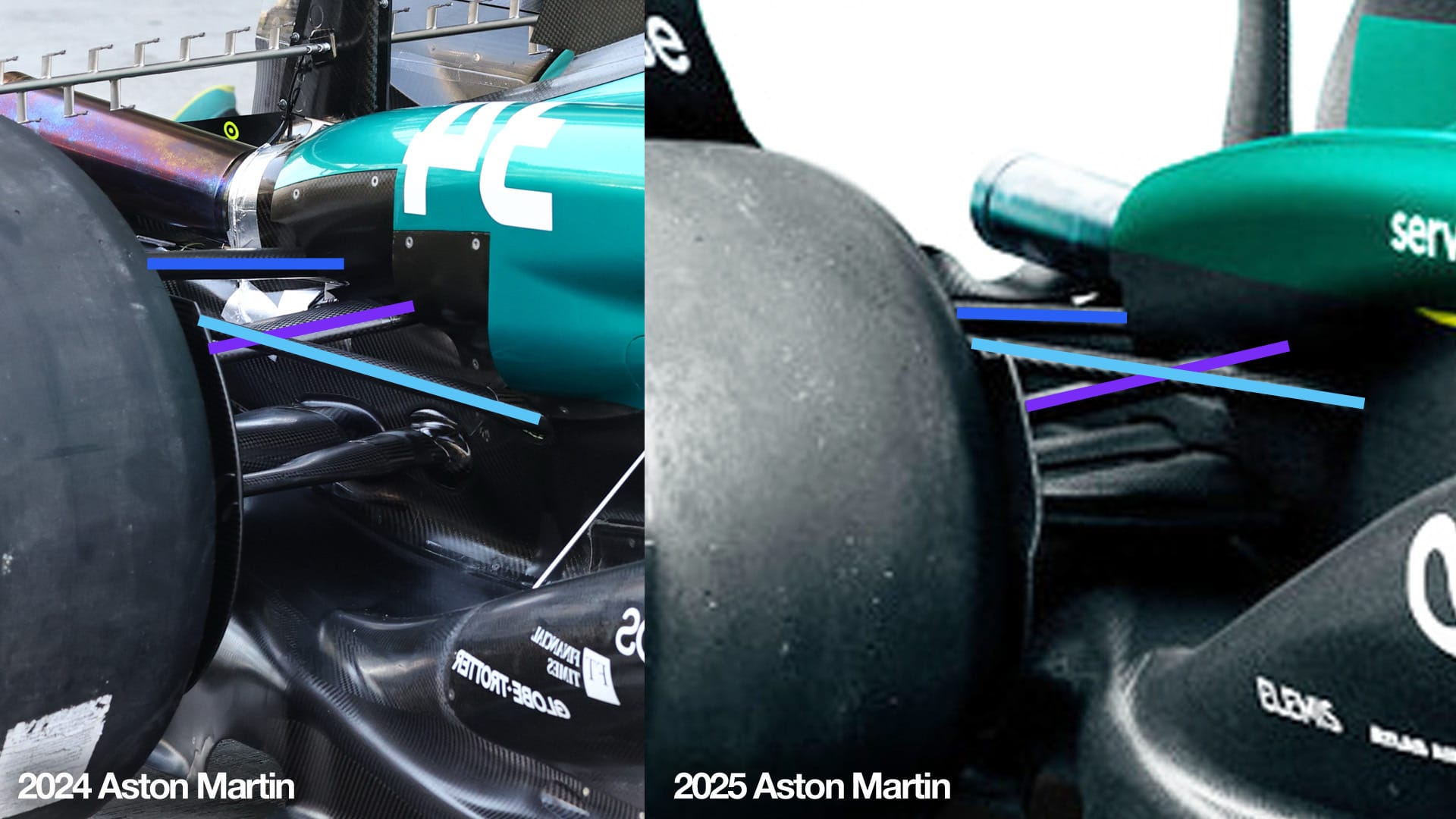
Aston Martin continues to utilize the Mercedes transmission system, which likely encompasses most of the rear suspension layout.
Upon comparison, there do not appear to be substantial differences from last year, with a largely shallow angle pushrod system (highlighted in magenta). It might be the photograph’s angle, but relative to the exhaust pipe position, it seems Aston has reduced anti-lift traits, particularly in the top wishbone’s rear (dark blue highlight) and forward (light blue highlight) legs.
Could this hint at potential strategies from Mercedes? We’ll get insights when they unveil their W16 on Monday.
Engine Cover
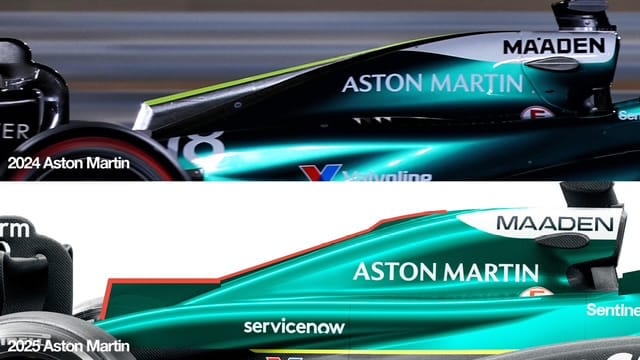
To enhance cooling efficiency, Aston has integrated a trailing edge slot at the center of the engine cover along with a fin. The regulations delineate the required side profile, and this fin serves to legitimize the slot’s design.
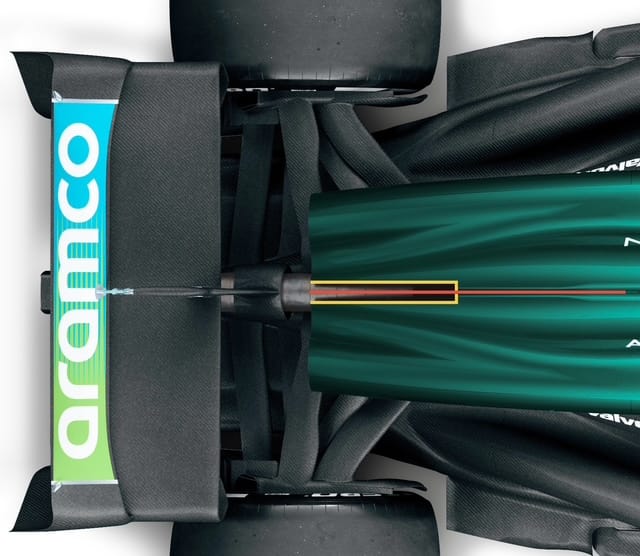
The fin is highlighted in red, while the cutout is marked in yellow; although the exit area isn’t extensive, it allows hot air from the upper cooling components to escape without interfering with the main sidepod cooling system.
Rear Wing
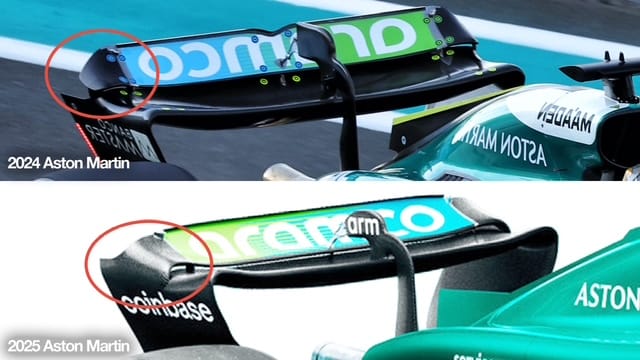
Aston Martin has emphasized enhanced corner entry stability in the design of the rear wing, as stated in their press release.
From my perspective, achieving driver comfort during corner entry is fundamental to the overall design philosophy; if drivers feel unsettled, their confidence—and subsequently their lap times—can suffer greatly in the race.
The rear wing is designed as a bolt-on component, allowing for various configurations throughout the season. In this design, I’ve highlighted a notable change with a red ellipse.
Compared to other teams’ revealed cars, most have diversified the rear flap, main plane, and endplate components; in contrast, Aston Martin has opted for a more integrated approach.
Aston’s 2024 Performance Trends
To better understand Aston Martin’s trajectory last year, here’s a look at their performance percentage deficits compared to the fastest drivers during each race weekend.
The data reflects a competitive start to the season, followed by a decline, particularly during the second and fourth quarters. The accompanying number indicates their ranking during those periods.

To consistently contend for points, a team must be within a one percent deficit over the entire season. Although Aston Martin began the season competitively, their performance waned over time; for podium contention, maintaining a deficit within half a percentage point is crucial, and while that’s no guarantee for success, it significantly increases the odds.










